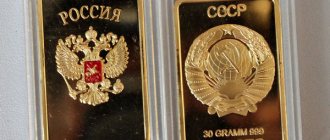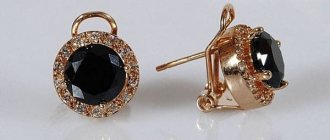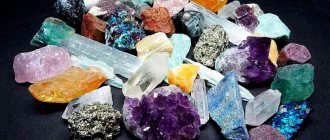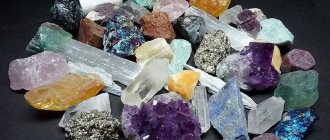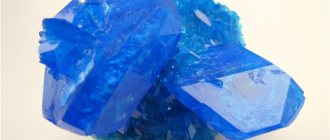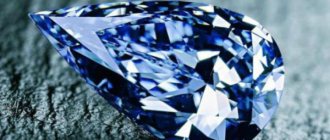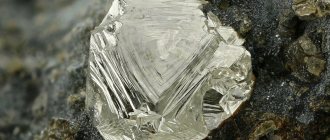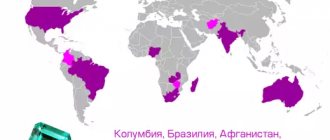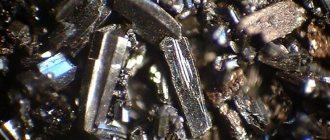Gold among ancient peoples
The history of this precious metal begins in ancient times. However, there is no archaeological evidence for the exact time when its use began. Scientists can only guess about this period.
Gold was probably found at different times and in different places. Thus, pieces of precious metal were discovered in Spanish caves, where people lived about 40,000 years ago.
But we can only say for sure that gold was most widely used in Egypt, India and China. Apparently, ancient civilizations mined it from various deposits in the Middle East. Many researchers believe that the Egyptians were the first. The lands of the Upper Nile and the Nubia desert brought them most of their resources.
Pharaohs and sacred ministers used this metal as temple decorations. This is approximately 3000 BC. e.
However, it is interesting to note that for a long time the medium of exchange of Egypt was not gold, but barley. The first use of gold as money was in 700 BC. e. in Lydia (modern Türkiye). And only then did the Egyptians switch to a similar system.
According to the most popular version, the largest gold reserves were concentrated in Egypt. However, they were subsequently taken out of there during wars. Finding itself first in Assyria, the gold passed to Babylon, and then to the Persian Empire and Rome. And after the fall of the Roman Empire it spread to different countries.
Gold came to Mesopotamia and Palestine from Egypt and Arabia during the development of trade. The oldest gold finds in this area date back to 961-922 BC. e. This is the reign of King Solomon.
The gold that lay in the treasuries of the Aztecs and Incas of Mexico and Peru is believed by researchers to have come there from Colombia. True, the conquistadors plundered these treasuries, and many precious artifacts were melted into coins and bars.
This is the only metal that has caused a huge number of wars. Among the famous golden battles are: the conquest of Babylon by Persia, the battle of Alexander the Great, as well as Caesar’s wars with Gaul and Egypt.
Famous gold deposits
An interesting fact is that 90% of all gold production in the world is provided by the ten largest deposits. The richest and most famous include:
- Muruntau, Uzbekistan. According to preliminary estimates, it is 2.5 times more promising than the next field on the list.
- Grassberg, Indonesia.
- Pueblo Viejo, Dominican Republic.
- Yanacocha in the Cajamarca region, Peru.
- Carlin Trend, Nevada, USA.
- Goldstrike mine, which includes 3 deposits, USA.
- Cortez, Nevada, USA.
- Olympics in Russia, Krasnoyarsk region.
- Veladero mine in Argentina.
- Boddington Quarry, Australia.
Gold in the 15th-19th centuries
Over time, people began to discover many gold deposits. In 1471 - in Mexico, Ghana and Chile. In 1823 - in the United States and Canada. Later - in Australia and South Africa.
Gradually, this metal was recognized as a monetary equivalent in all countries. And the gold industry began to flourish. Gold began its history in Russia only in the 18th century.
It is believed that the Demidovs were among the first to mine it - since 1726. Around the same time, work was carried out in the Altai mines and a little later in Karelia.
And in 1745 the metal was found in the Urals region. One of the schismatics, Erofei Markov, found an unusual stone on the road and reported it to the Office of the main Yekaterinburg plant. According to his descriptions, it was a small light stone, reminiscent of crystal. They dug up the ground in this place and found several more of the same kind. This story of the discovery of gold became the impetus for the further development of this industry.
A gold mine, called Primordial, was created at this place. Subsequently, many other nuggets were found here, which led to the discovery of even more mines, later called the Berezovsky group.
During the first ten years, more than 6,000 kilograms of this precious metal were mined from these deposits. True, this work turned out to be exhausting. The working conditions were so difficult that all gold mining work was considered hard labor.
Afterwards, many other sources of precious metals were discovered in the Ural territories. It is interesting that active mining of placer gold began in Russia.
At the end of the 19th century, deposits were found in the Far East. And since then, Russia has been one of the largest gold miners on the world market.
Goldmine
The story of how one find gave rise to a chain of events that made the Urals a gold mining center for many years
Industrial gold mining in Russia began exactly 270 years ago: with three or four shiny stones dug up near Yekaterinburg on May 21 (June 1), 1745, between the Shartashskaya and Stanovaya villages by the Old Believer Erofey Markov. Gold was not his goal - he was looking for “tumpas” and “stroganets” (smoky and transparent rock crystal) for a cutting factory. But over time, through the efforts of the Ural miners, the semi-handicraft gold mining industry turned into a powerful industry.
Berezovsky unique
Mentions that there are large deposits of precious metals on the territory of modern Russia were found back in the 5th century. But only ten centuries later, under Tsar Ivan III, their search became a state task: many favors were promised to those who found gold and reported it to the authorities, and terrible punishments to those who found and hid it. The efforts, however, were in vain: no one provided official data about the gold found. Later, Peter I developed active efforts to discover domestic gold, but equally unsuccessfully.
Only 20 years after the death of the first Russian emperor, the accidental discovery of Erofei Markov radically changed the situation. Where, among the swamps, he first dug up “a pebble with particles like gold,” a mine was founded in 1747, which gave rise to the rich Primary mine. Geologists note that this is an amazing, unprecedented fact in the world history of searching for and finding gold, since in all gold-mining countries alluvial deposits were first discovered, and only then primary (vein) deposits. In Russia it’s the other way around.
The mine became the founder of the Russian gold mining industry as an independent industry. Ten years later, by order of the mining chief Nikifor Kleopin, the first specialized gold washing plant in the Russian Empire was built and launched here.
Later it turned out that this was a unique world-class vein gold deposit, included in geological textbooks in all countries of the world. It turned out to be incredibly rich and long-lived: in more than 250 years (work was interrupted only during the period of devastation from 1923 to 1929), over a thousand mines were built here. Four are still in operation, with one of the mines recognized as the oldest operating mine in the world.
The Old Believer’s luck inspired many to search for gold: in the 18th century, primary gold deposits were found in the Urals at the Shilovo-Iset copper mine, in the area of the Nevyansk plant, Nizhny Tagil, and Miass.
Brusnitsyn fever
But the real gold rush was sparked by the discovery of placer gold made by foreman Lev Brusnitsyn near the same Berezovsky mine in September 1814. And if the previous find was simple luck, then this one was the result of many years of work and incredible ingenuity. Lev Brusnitsyn is not an accidental person in the mining industry: from the age of 11 he worked as a panner in gold mines, and by the age of 30 he became the technical director of a large gold washing factory at that time. He was sent to develop new industries throughout the Urals and Siberia.
Diagram of Lev Brusnitsyn’s gold washing machine - the prototype of devices still produced for the industrial mining of placer gold). It is based on a manual device with swivels: the sandy material was wiped on a grated platform, separated from the clay, it fell into the airlock, washed in a weak stream of water and moved to the settling tanks-catchers. In 12 hours, one worker could process up to 400 kg of raw materials Illustration: Berezovsky central city library
A good knowledge of the peculiarities of the occurrence of indigenous gold helped him discover placer gold. He searched purposefully. While examining the old folding dumps of the Petropavlovsk ore crushing factory, I noticed two grains of gold, different in color and shape from those mined from bedrock ores. A long search for the place where they got into the tray led to rich gold-bearing sands in the basin of the Pyshma and Berezovka rivers.
The merit of Lev Brusnitsyn is not only that he was able to discover the first placer gold in Russia. He was the first to use a new method of extracting precious metal - washing, he himself designed washing machines, and managed to organize industrial mining. Moreover, all his inventions were economical and easy to use.
The discovery of a new type of gold deposits - easily enriched, accessible to even one person for mining in the most primitive ways - marked the beginning of the world's first gold rush. It was from here that this “epidemic” spread throughout the planet. Numerous placers of the precious metal were found in other areas of the Urals, in Siberia and Altai, which served as a new powerful impetus for the development of the gold industry in the country, which so needed money after the ruinous war with Napoleon. From 1812 to 1845, the volume of gold production in Russia increased 20 times, which brought it to first place in the world. The country provided half of the world's production of the precious metal. Gold of the North
The discoveries and inventions of Lev Brusnitsyn determined the approach to gold mining in the Urals for centuries to come - mainly alluvial deposits were mined here. Moreover, there were a lot of them.
A new stage of gold mining in the region is associated with the discovery in 1985 in the north of the Sverdlovsk region near Krasnoturinsk of a new large gold deposit - Vorontsovsky (gold reserves - 65 tons, silver - 58 tons). Geologists knew that sooner or later they would find it, because the placer deposits with which the region was saturated were derived from the indigenous ones. Deposits were discovered by starting additional exploration of the Severopeschanskaya iron ore mine.
To develop Vorontsovka, in 1993, a group of local entrepreneurs, with the participation of the Krasnoturinsk administration, created the “Gold of the Northern Urals” enterprise. The shareholders tried to find ways to develop this deposit, but they lacked enterprise and courage - the deposit resembled a layered pie: oxidized ores on top, and primary gold-sulfide ores below. It was necessary to create a mining and metallurgical production facility, including one using leaching technology (dissolving precious metals using cyanide). At that time, there was no experience of effective industrial application of this technology in the domestic industry. In the USSR, similar ones were developed only in the uranium deposits of Central Asia, where miners and metallurgists were engaged in underground leaching of uranium ores: the chemical and physical principles of gold and uranium mining are similar.
Industrial mining of precious metals at Vorontsovsky began in 2000 - after “Gold of the Northern Urals” entered the newly created. After the collapse of the USSR, specialists who worked in the Zarafshan belt of uranium deposits in Uzbekistan were invited to its engineering center. Having purchased the Murtykty deposit in Bashkiria in 1998, the company began to master the technology of extracting precious metals using the heap leaching method (in this case, cyanide is not pumped underground - it is used to irrigate ore material that has already been raised to the surface, crushed and placed in a special stack). The first year was unsuccessful - the ore produced nothing. But the mistakes were taken into account, and already in 1999 Polymetal received its first gold at Murtykty.
At the same time, an industrial site was built on Vorontsovsky: a heap leaching site, crushing and screening and technological complexes. The first thousand tons of ore were poured into piles and the first 280 kilograms of gold were obtained. Later, winter heap leaching technology was used at the deposit for the first time in Russia, which made it possible to mine precious metals year-round.
But it was clear: sooner or later we would have to move on to mining extremely difficult-to-process primary ores. Therefore, at the same time, construction of a vat leaching gold recovery plant (coal-in-pulp technology) was underway at ZSU, which was launched in 2004. Today this is the heart of the enterprise - it produces the largest volume of production.
A new approach to the development of gold deposits led to a change in the structure of gold mining in the Middle Urals: if in 2000 alluvial deposits accounted for over 50% of the precious metals mined in the region, now it is mining deposits. Over more than 15 years of history, “Gold of the Northern Urals” has invested over $70 million in the development of the production complex on Vorontsovsky. Polymetal has grown from an enterprise created from scratch into a world-class company and one of the leaders in gold and silver production in Russia.
The gold standard: a brief historical excursion
The gold standard is an accepted system according to which the value of money is equivalent to a certain amount of gold. Initially, the silver standard was adopted. But later the silver was replaced.
This approach had many advantages:
- durability of the metal and its immutability;
- good divisibility;
- high level of cost;
- characteristic differences from other metals.
One of the principles of the gold standard is that any money can be quickly exchanged for gold. This is a guarantee of no inflation.
This model first appeared in England at the beginning of the 19th century. And the pound had the status of a currency recognized throughout the world for a long time - until 1914. During the Bretton Woods Conference, this standard was legalized.
At the end of the 20th century, America abandoned this system. And after some time, the standard ceased to be used at all. This happened for several reasons:
- Difficulty moving large amounts of money.
- Difficulty in issuing.
- Possibility of resource loss.
Since the present time is characterized by many financial crises, economists have proposed returning to the standard. However, gold reserves are too small for this. And they are unable to ensure full monetary circulation.
How are gold veins found?
Gold is a mineral resource that is developed in several stages:
- Exploration of the deposit and delineation of the site for future developments.
- Economic assessment of deposit volumes.
- Excavation of deposit sites and creation of initial infrastructure for industrial development.
- Extraction of gold-bearing rocks - ore, sand and extraction of precious metal from them.
Quartz vein with gold
Exploration and prospecting work is carried out by studying rock outcrops, examining cores recovered during drilling, and geophysical studies of strata. Geologists often determine the zone of possible gold-bearing rocks by accompanying minerals. These include chalcopyrite, pyrite, sphalerite, galena, arsenopyrite, stibnite, and brown ironstone. The main mineral that geologists look for when searching for gold is quartz. It is in quartz veins that gold inclusions are most often found.
Interesting: How is gas produced? Types of gas production, description, photos and videos
The satellites of gold ore are rocks - diorites and granites. They are formed under the same conditions in the depths as gold-bearing rocks, that is, when magma rises to the surface and cools in the upper layers of the earth's crust.
But why do people value gold so much?
Sigmund Freud believed that “our fascination with gold is associated with the erotic fantasies of early childhood.” However, there is a more rational explanation.
Even in ancient times, the pragmatic Egyptians noticed that it had unique physical characteristics. And the additional value of this metal was given by aesthetic features and its shortage that existed at that time.
Unique properties of gold
Gold is called a “noble” metal because it does not oxidize under normal conditions. The tradition of calling it that came from alchemy. Its chemical symbol Au comes from the Latin word "aurum", which means "Aurora" or "dawn".
In its pure form, the metal has a soft shine and a yellow tint. But impurities of other metals create different color shades: from silver-white to green and even red-orange. Pure gold is relatively soft and bends easily. This is the most flexible and ductile metal.
It is believed that this is the first precious metal that people began to use in their activities. Since the Stone Age, aurum has evolved from a material for weapons and jewelry to a universal measure of value. And the reason for this is precisely its properties:
- non-oxidation;
- flexibility and ductility;
- ductility;
- attractive appearance.
The density of this metal in its pure form is 19.3 g/cm³. For comparison: mercury has 14.0 g/cm³ and lead has 11.4 g/cm³. Impure gold, and this is exactly what it is in deposits, has a density of 16 to 18. Taking these indicators into account allows you to separate gold from clay, silt, sand and gravel.
The popularity of gold is explained by its universal physical and chemical properties. Thus, rarity, difficulty of extraction and convenient chemical properties contributed to the fact that this particular precious metal has gained such popularity.
And for many centuries now, humanity has not been able to find another similar instrument that is just as well suited for creating reserves and investments.
Gold and its reserves are the main element of the economy of most countries.
What things and materials can gold be mined from?
At home, you can also highlight gold, which is found in ordinary household items.
From electronic boards
Old Soviet devices contain some amount of noble metal. It is present in electronic boards, old microcircuits, transistors, capacitors and connectors. Modern technology - phones, tablets, computer parts - also contain gold.
From dishes
Expensive sets, especially those produced during the Soviet era, are often decorated with thin strips of gold leaf, which can also be removed.
Major historical events in the development of gold
History has many significant events in the development of gold. It has come a long way from ancient times to our time.
The table reflects a brief chronology of the world’s “golden” history:
| 1500 BC e. | Gold debuted as a recognized standard of exchange in international trade. |
| 50 BC e. | The ancient Romans first issued a gold coin. |
| 1066 AD e. | The Norman conquerors firmly established the British monetary system. |
| 1284 n. e. | England issued the gold florin, the country's first major gold currency. |
| 1900 AD e. | The United States officially went on the gold standard. |
| 1971 e. | President Nixon ended the gold standard in America. |
| 1978 e. | There is increasing interest in buying bullion to store value and hedge against inflation. |
| 2011 e. | The price of gold reached a record high of $1,923 per ounce. |
Over the past 50 centuries, national currencies have undergone many changes, coming and going. But this precious metal remains a valuable resource to this day and is not going to lose its position in the near future.
Industrial gold mining technologies
Extracting minerals from the subsoil is a complex and strictly regulated process. In general, there are two methods of industrial mining of solar metal: open-pit mining and underground.
Open way
It is used when gold lies very close or comes to the surface. This is the most feasible method from an economic and environmental point of view. It looks like this: a huge depression in the ground with ribbons of roads and lifts. Rock is removed from the bowels of the earth using explosives and special heavy equipment. The machines deliver the necessary tools and transport the extracted ore. The costs of all this are very high. It is believed that the price of diesel fuel alone accounts for about 30% of the cost of gold mining.
In a good open pit mine, each ton of ore may contain about one-tenth of an ounce of metal (an ounce is equal to 31.1034768 grams). Based on the cost of an ounce of gold being $900, the cost of a ton of ore is $90. Considering that the carrying capacity of the vehicles used in the mines reaches 300 (or more) tons, a truck of ore can cost about $28. But the reality differs from expectations and calculations: during mining, some batches are richer than others, and many turn out to be dummies.
Closed method
When gold lies deep, underground mining is used. These are deep mines with a network of tunnels, each of them reaching the deposits. Here you need to drill holes into which explosives are placed, then pull out the rock fragments. Sometimes workers use jackhammers, shovels and carts, although, of course, this is a thing of the past. Modern gold mining uses explosives, powerful rock-loading machines, rail vehicles or huge trucks. Very rarely, natural conditions allow the use of the most effective self-propelled equipment, and then the number of people at this very labor-intensive and rather dangerous stage of production is reduced.
To ensure uninterrupted energy supply to such mines, wind or solar power plants are sometimes installed nearby, and if this is not possible, diesel generators are installed. Gold mines are very deep, which means ventilation is important, as is the transportation of people and rock. Without electricity, all this cannot be achieved.
As a rule, mines are located in areas difficult to live in, so the availability of electricity is always extremely important.

